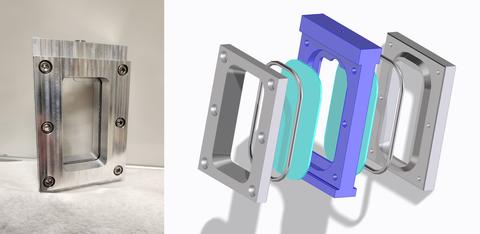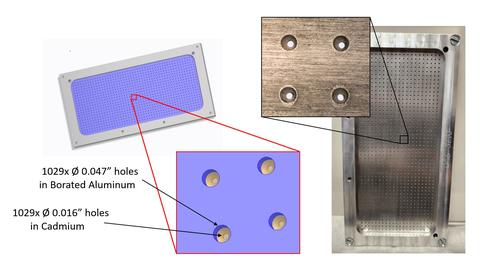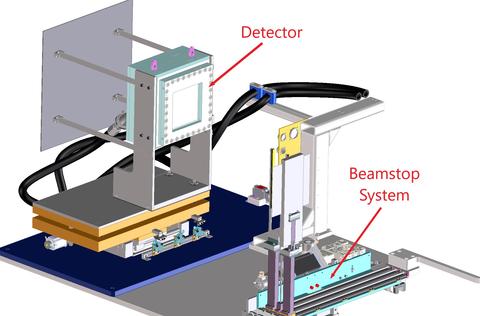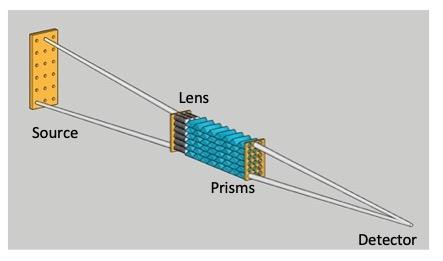CHRNS: vSANS Improvements
New Large Ti Liquid Cell for 18 Beams
To accommodate the larger beam area, a liquid cell has been designed and built with a fill volume having 38 mm width, 75 mm height and 2.0 mm thickness requiring 5.5 mL to fill.

High Count Rate Beam Monitor
The instrument was initially designed to utilize two beam monitors of a factor of ten different efficiency, since the count rate varies over a wide range depending upon instrument settings. The monitor count rate is used to normalize the data from small fluctuations in reactor power. The new factor of ten higher efficiency monitor will increase the count rate by a factor of ten and thus reduce the statistical error in the power normalization by a factor of three. The new monitor will be used for normalizing all data taken with the velocity selector and HOPG monochromator. The higher beam intensity obtained using the deflector or guide only options will require the continued use of the lower efficiency monitor to avoid error in count rate measurement caused by saturating the monitor electronics at rates above 50 kHz.
Pinhole Attenuator
Currently, a variable-thickness plastic attenuator using the scattering method is used to attenuate the beam over a wide range. The attenuation is used primarily when the direct beam is observed for transmission measurements and absolute calibration. Systematic errors occur when the attenuation is smaller than 1/1000, due to leakage of inelastic scattering events into the collimated beam. To avoid those errors, the thickest plastic slab is being replaced with a pinhole-type absorption attenuator having a fixed attenuation of 1/1000.

High-Resolution Detector Upgrade
The scintillator 2D detector is being replaced with a 3He gas 2D detector of similar spatial resolution. The figure below shows the detector mounted on the rear carriage. The new detector will have a much lower background improving the sensitivity for measuring weak scattering samples. This detector also has time stamping for individual neutron events, where the scintillation detector did not.

Converging Beam Collimation
The converging beam option on vSANS provides 18 circular beams which converge at the detector. Nine biconcave MgF2 lenses focus the beam for neutrons having 8.4 Å mean wavelength. Nine prisms counteract the wavelength-dependent distortion of the beam due to gravity. A sequence of 13 masks placed along the incident flight path eliminates crosstalk between the 18 individual beams [1].

The new liquid D2 cold source will shift the spectrum to longer wavelengths. To take full advantage of this upgrade, we have changed the number of lenses per beam from 14 to 9, increasing the focusing wavelength from 6.7 Å to 8.36 Å. This modification not only reduces the minimum Q from 3.2x10-4 Å-1 to 2.6x10-4 Å-1, it also increases the data rate by about 50%, after accounting for the transmission losses and the new cold source. In addition to removing some lenses and prisms, this change required realigning the 13 masks as the longer wavelength neutrons follow a higher parabolic trajectory due to the slower mean neutron velocity.
Reference
[1] J.G. Barker, J J. Moyer, S.R. Kline, G.V. Jensen, J.C. Cook, C.V. Gagnon, E.G. Kelley, J.P. Chabot, N.C. Maliszewskyj, C. Parikh, W.C. Chen, R.P. Murphy & C.J. Glinka (2022). “The Very Small-Angle Neutron Scattering Instrument at the National Institute of Standards and Technology” J. Appl. Cryst., 55, 271-283.


